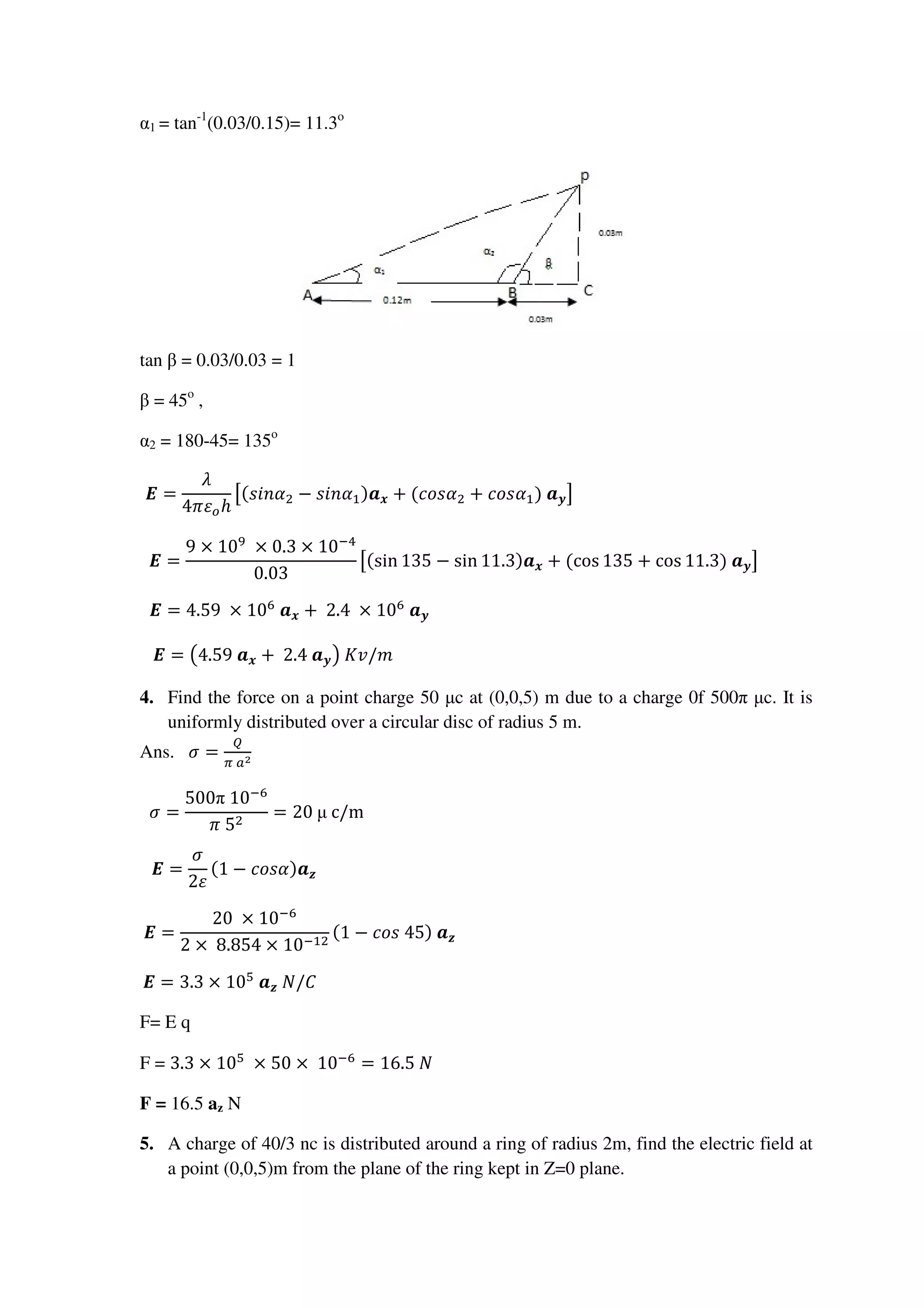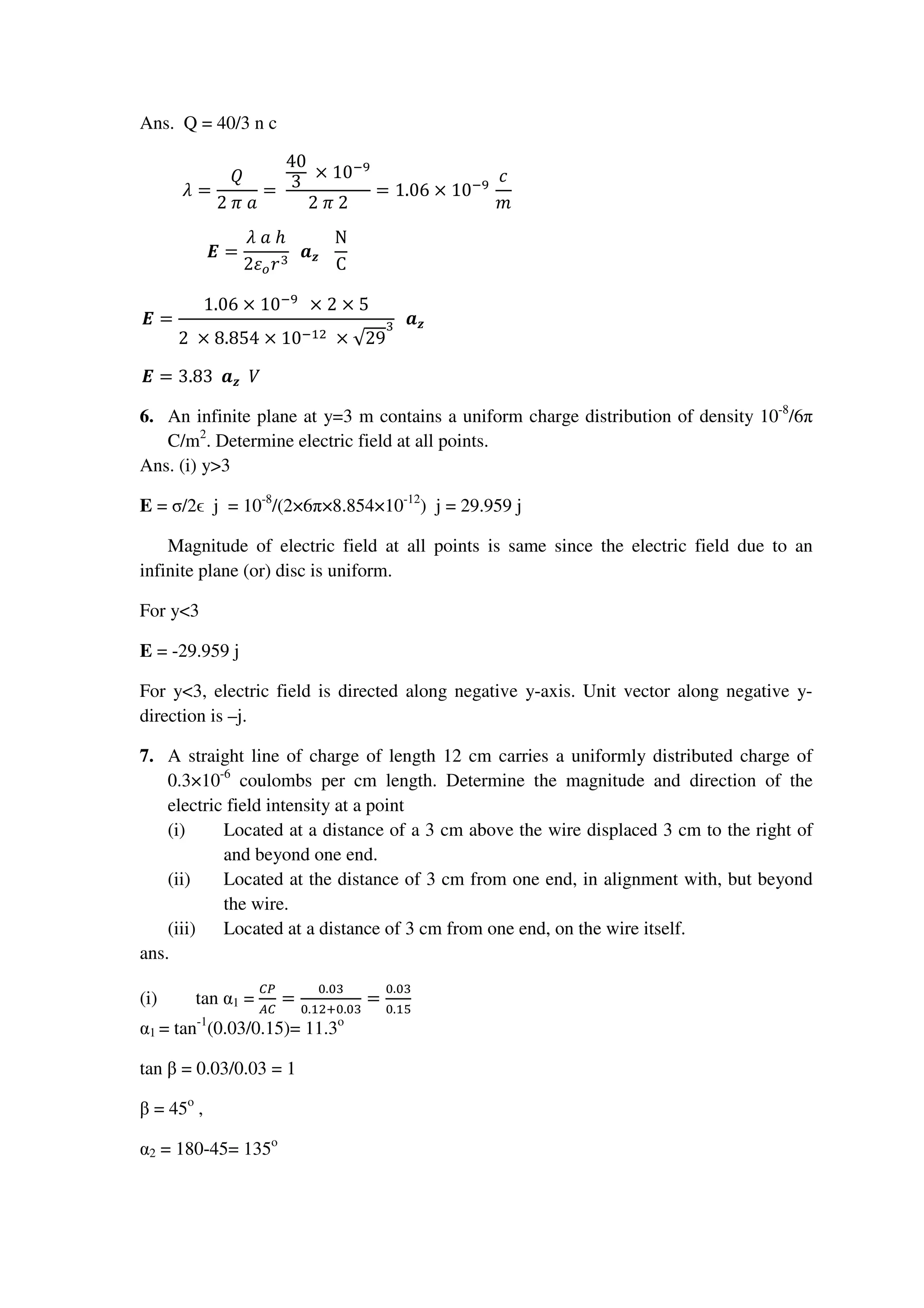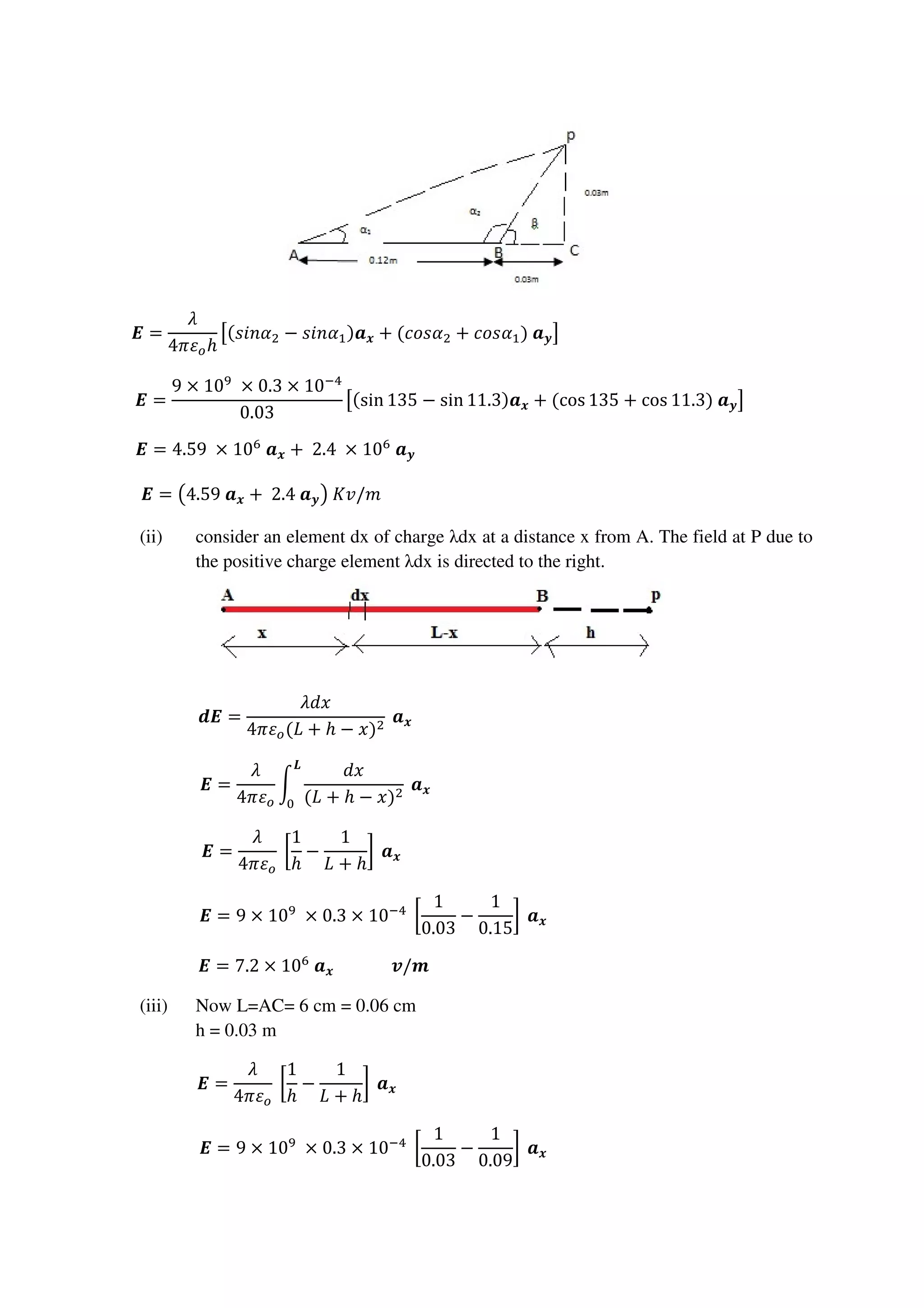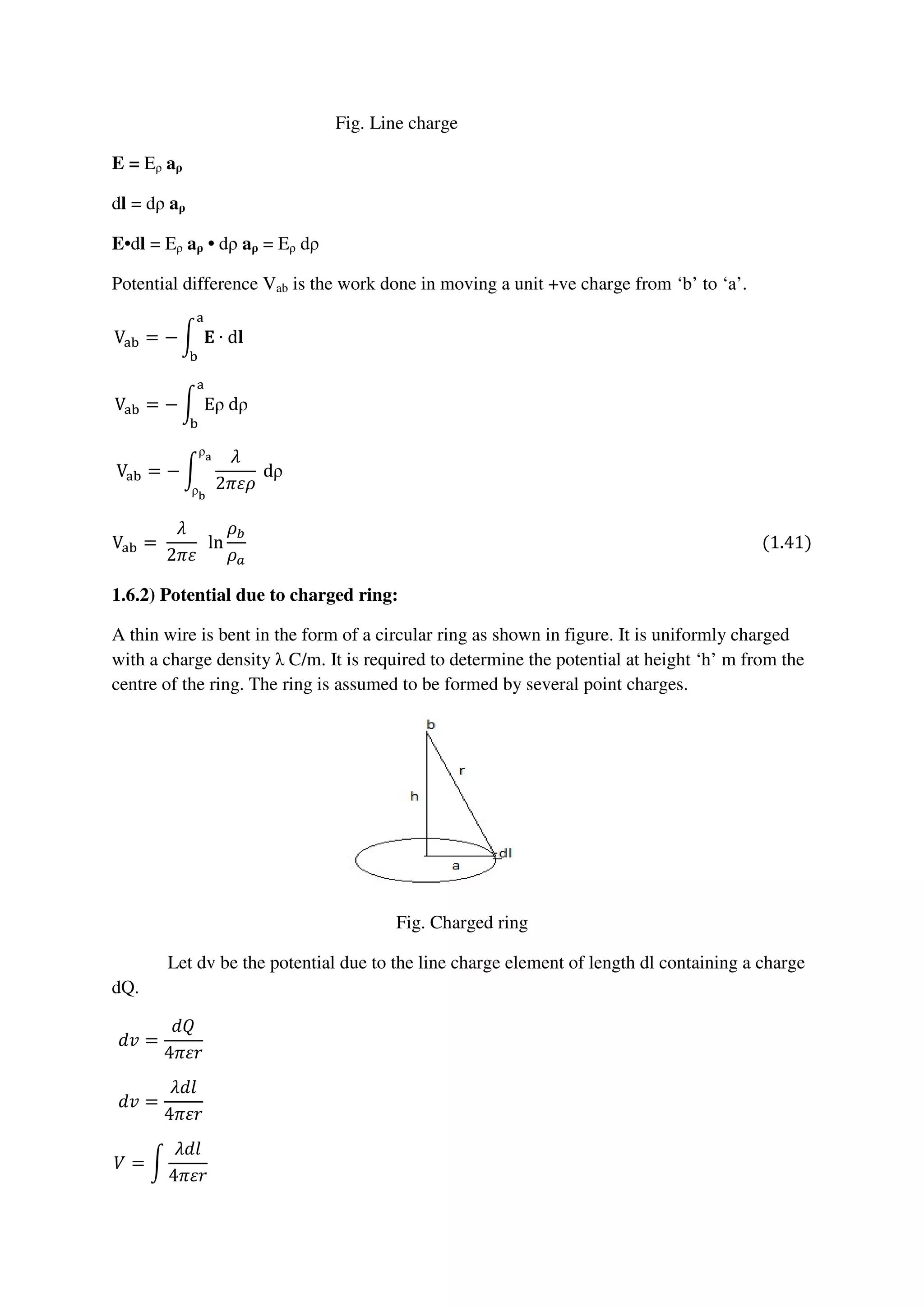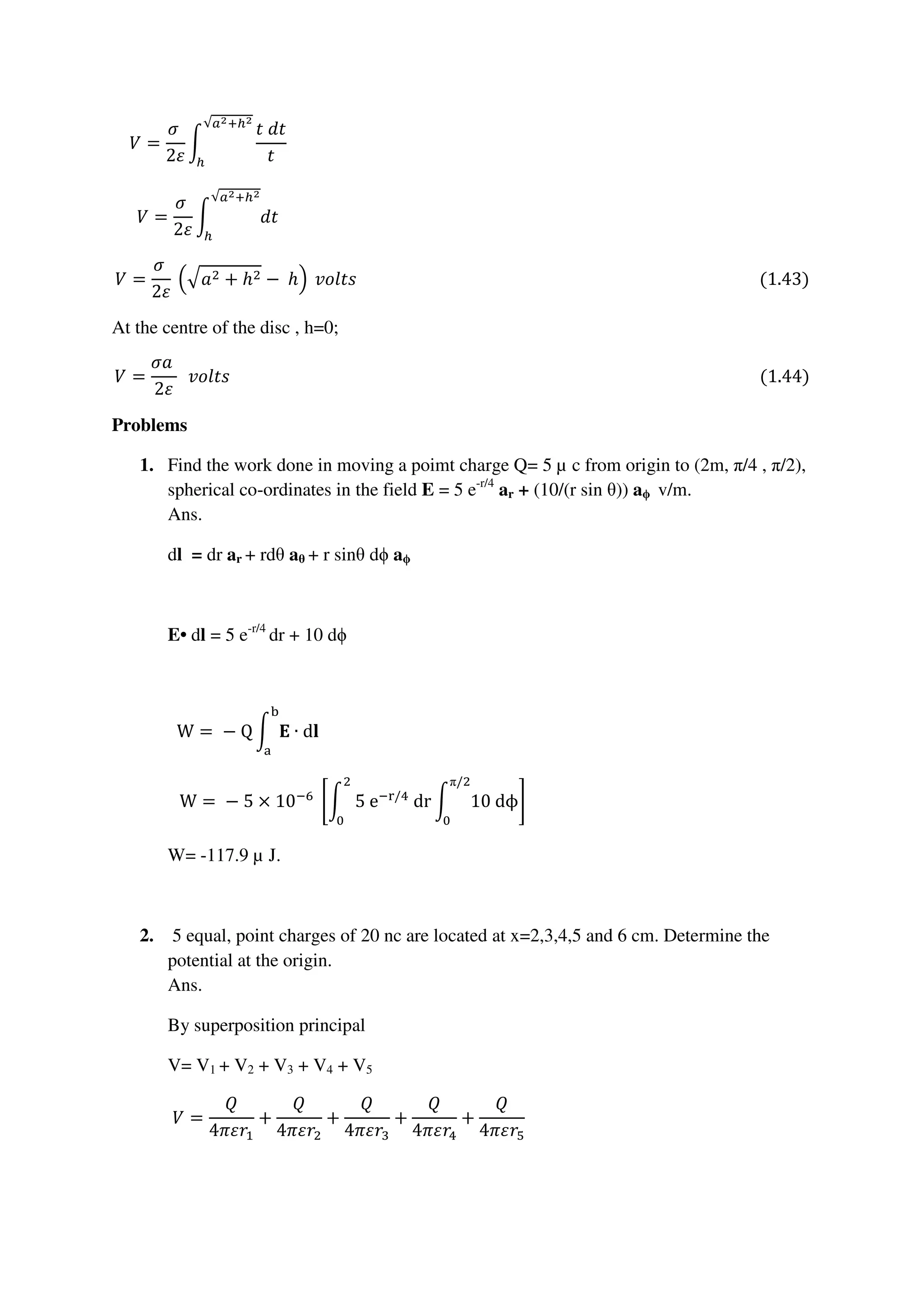1. Coulomb's law states that the electrostatic force between two point charges is directly proportional to the product of the charges and inversely proportional to the square of the distance between them.
2. The electric field intensity is defined as the force per unit charge. The electric field intensity due to a single point charge is calculated using Coulomb's law. For multiple point charges, the total electric field is calculated using the principle of superposition.
3. Continuous charge distributions can also produce electric fields. These include line charge distributions with linear charge density, surface charge distributions with surface charge density, and volume charge distributions with volume charge density. The electric field due to a uniform line charge distribution can be calculated by treating

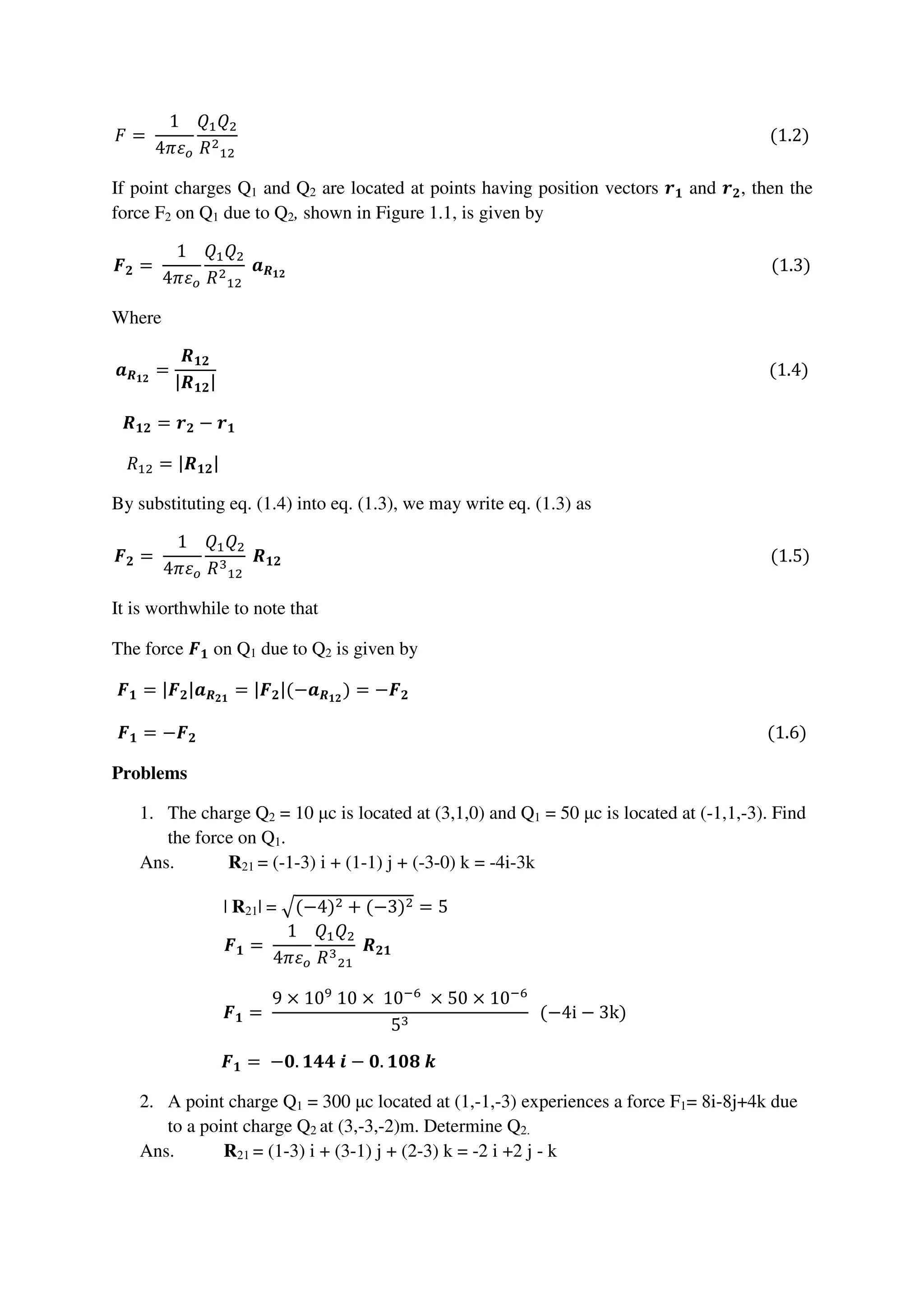
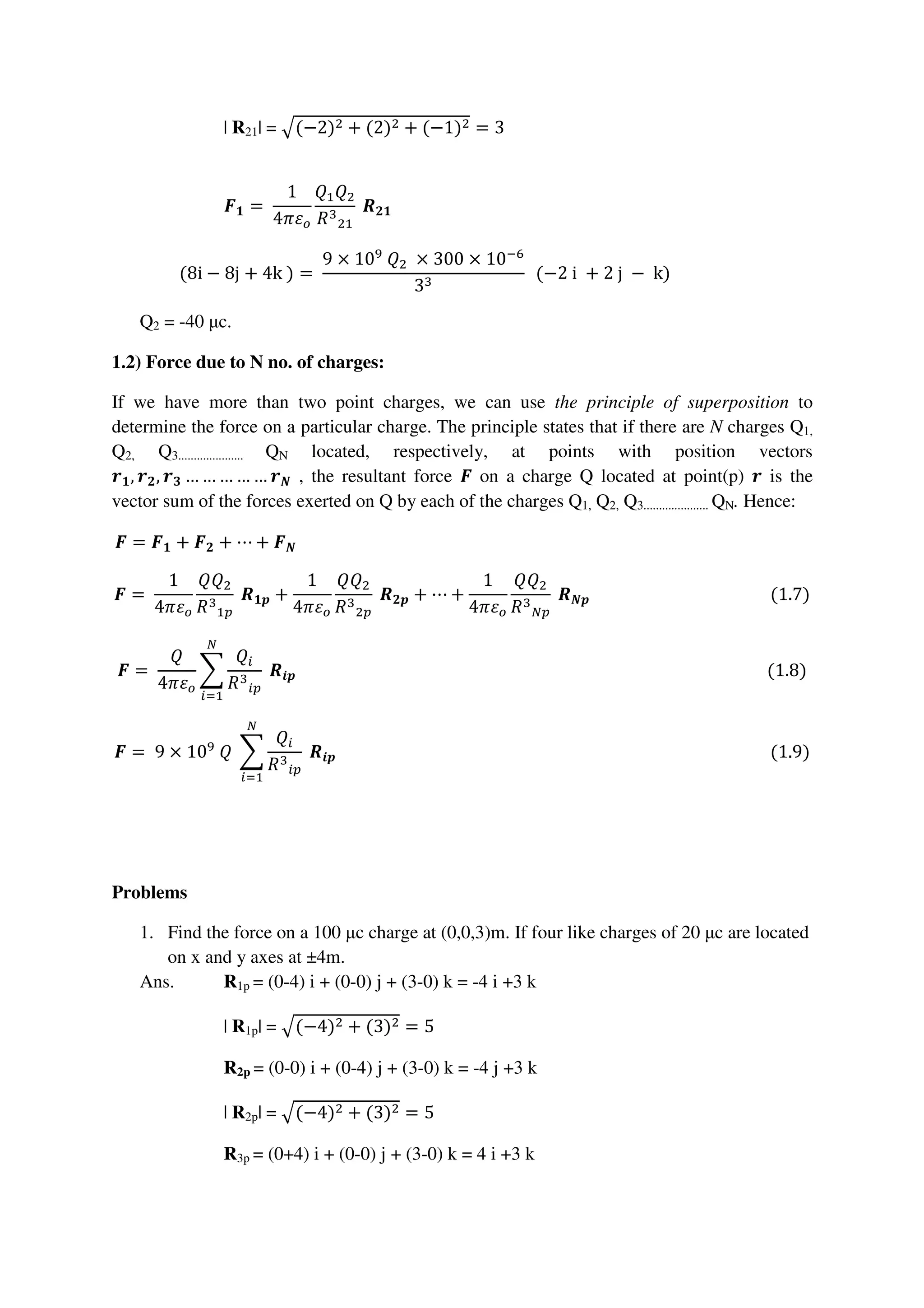

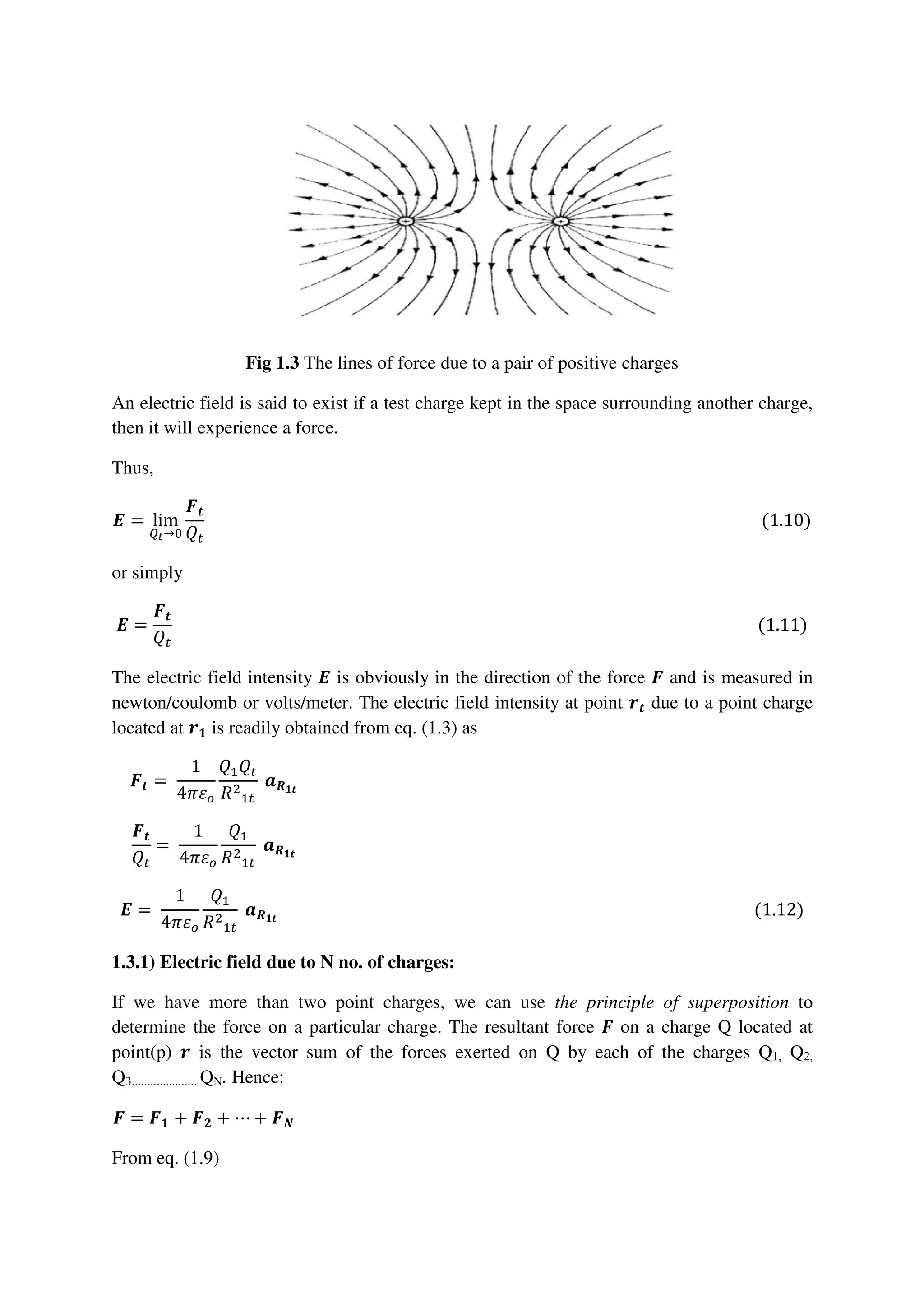
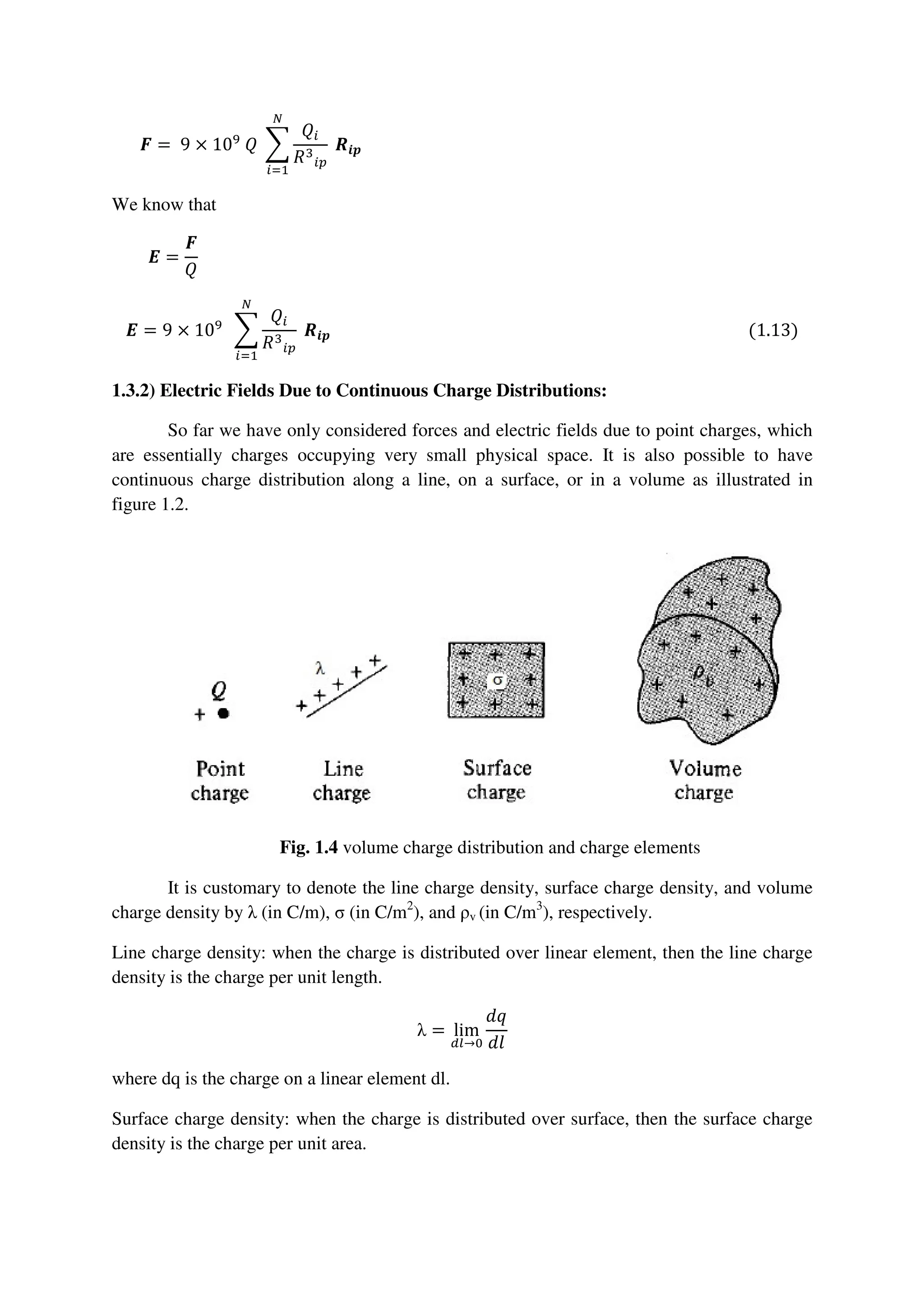


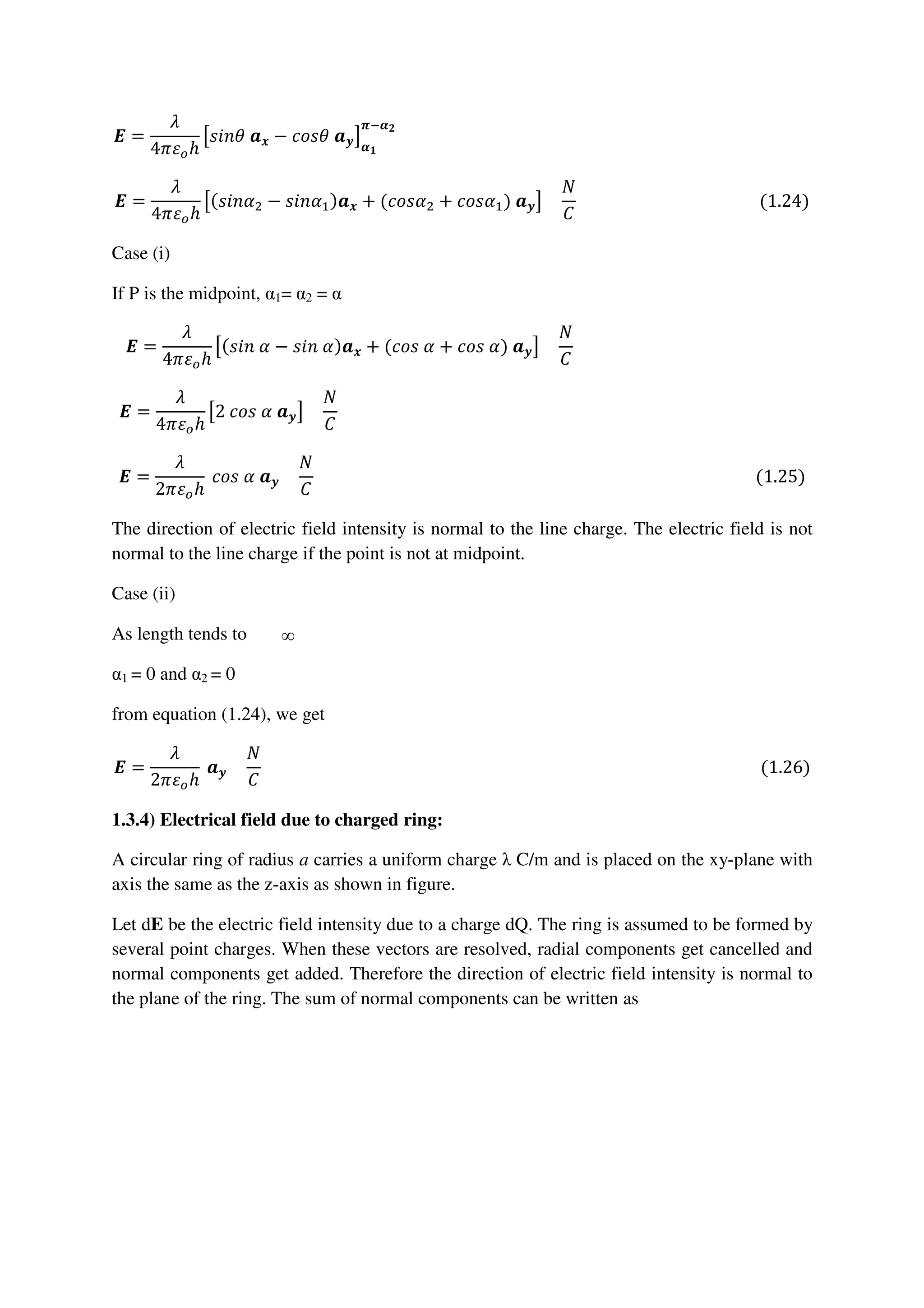
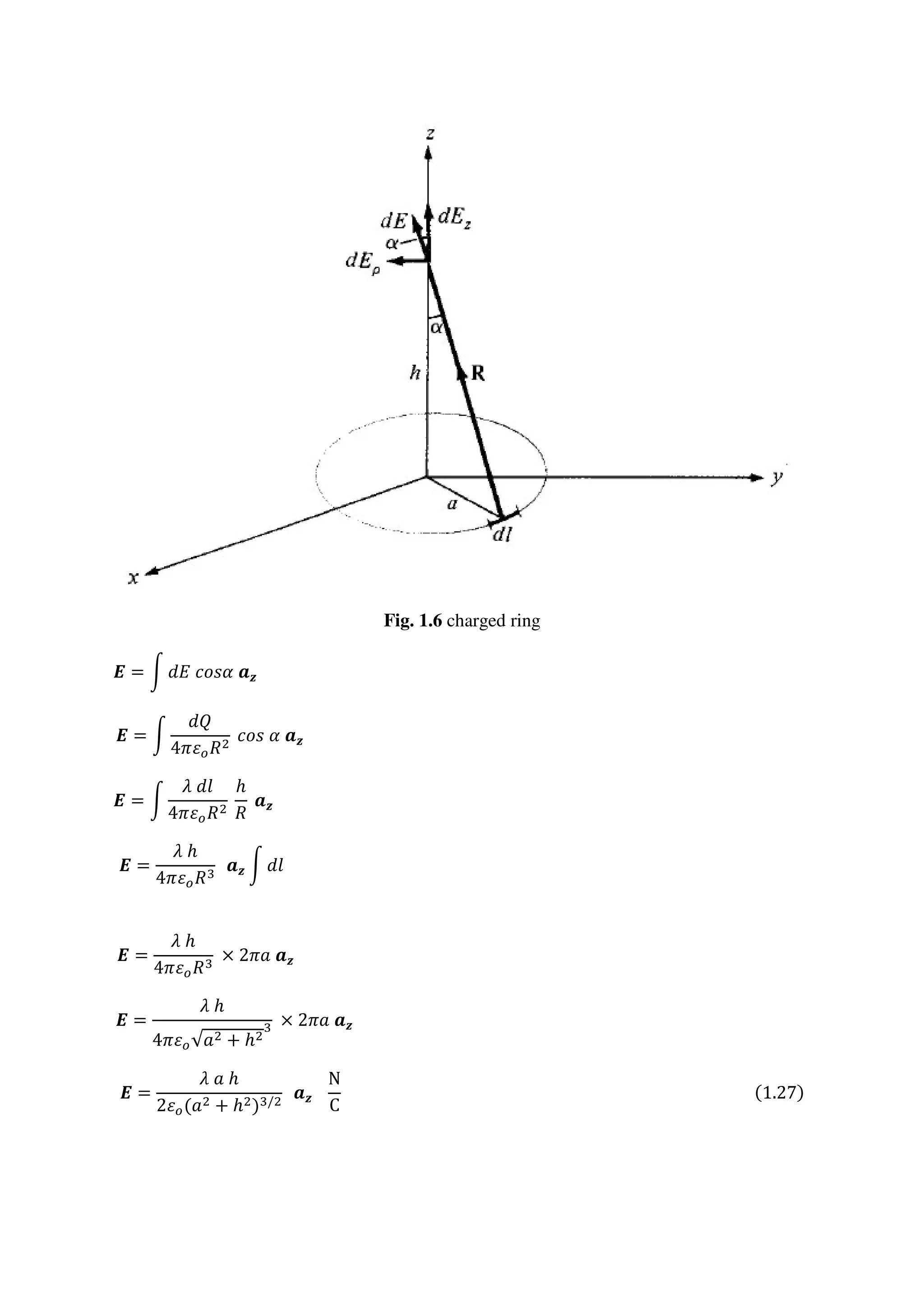

![dE =
σ ୢୱ
ସగఌమ
cosߠ az (1.28)
ds = π[(x + dx)2
– x2
]
ds = π[x2
+ dx2
+ 2xdx – x2
] = 2π x dx (neglecting dx2
term)
Substituting ds in eq. (1.28) , we get
dE =
σ ଶπ୶ୢ୶
ସగఌమ cosߠ az
dE =
σ ୶ୢ୶
ଶఌమ
cosߠ az (1.29)
From above figure we can write
Tanߠ = x/h
x = h tanߠ
(1.30)
dx = h sec2
ߠ dߠ
(1.31)
cosߠ = h/r
r = h/ cosߠ = h secߠ
(1.32)
Substituting eqs. (1.30), (1.31) and (1.32) in (1.29) we get,
dE =
σ ( ୦ ୲ୟ୬θ)(୦ ୱୣୡమθ ୢθ)
ଶఌ୦ ୱୣୡθమ cosߠ az
dE =
σ
ଶఌ
sinߠ dߠ az
On integrating
ࡱ =
ߪ
2ߝ
න ߠ݊݅ݏ
ఈ
݀ߠ ࢇࢠ
ࡱ =
ߪ
2ߝ
ሾ−ܿߠݏሿ
ఈ
ࢇࢠ
ࡱ =
ߪ
2ߝ
(1 − ܿࢇ)ߙݏࢠ (1.33)
From figure 1.7
ܿߙݏ =
ℎ
ඥ(ܽଶ + ℎଶ)](https://image.slidesharecdn.com/emfuniti-201114062820/75/Emf-unit-i-12-2048.jpg)

